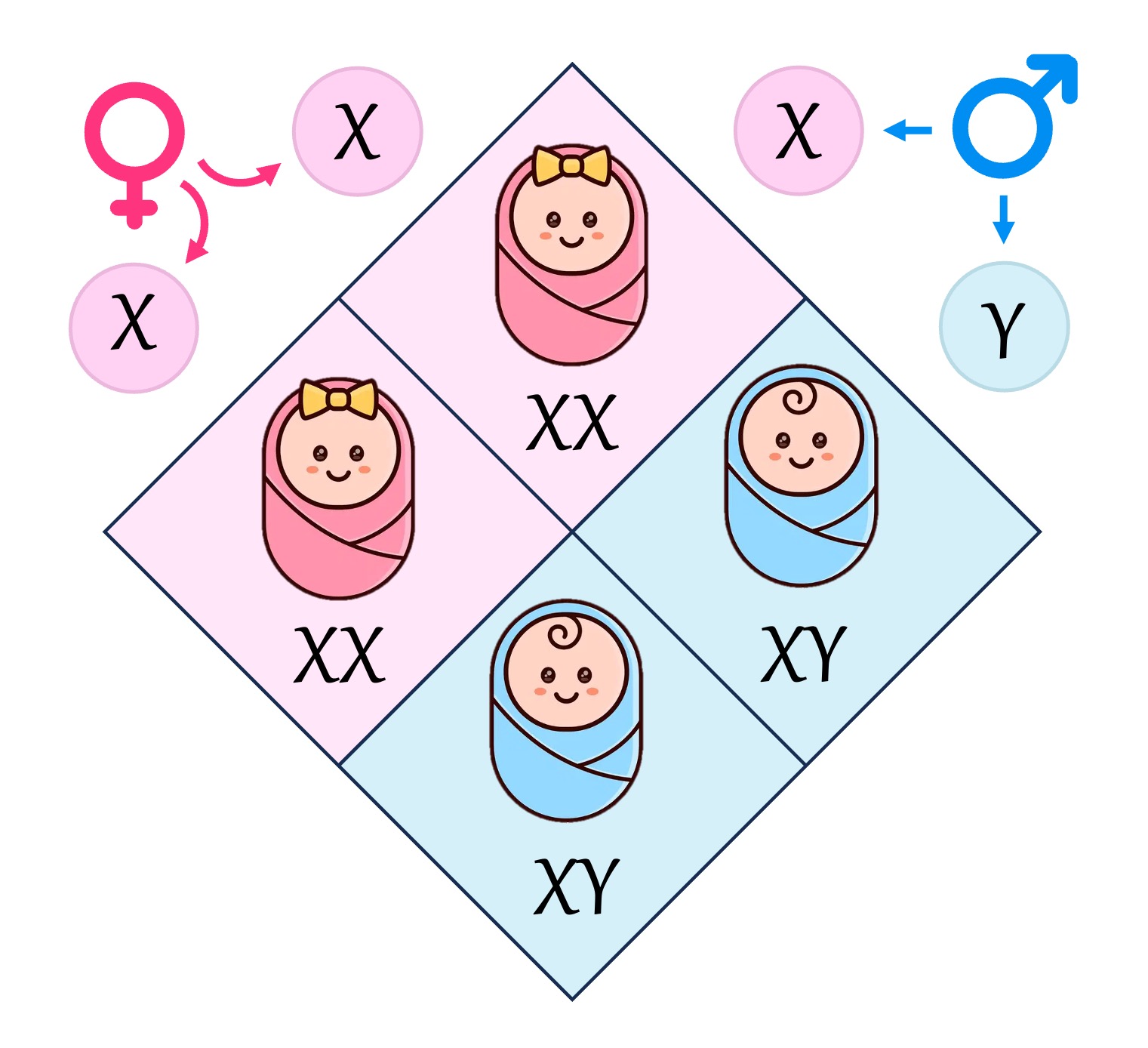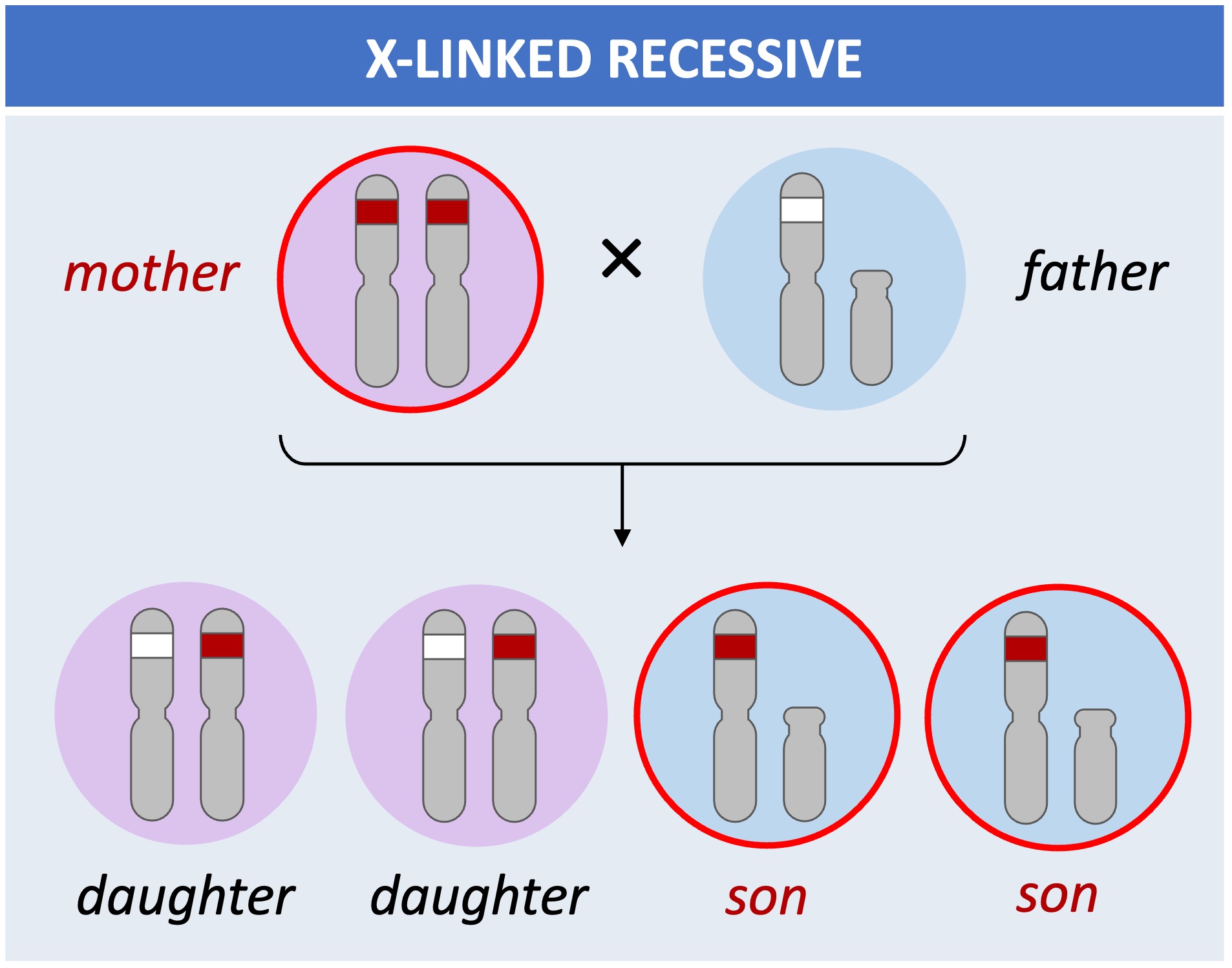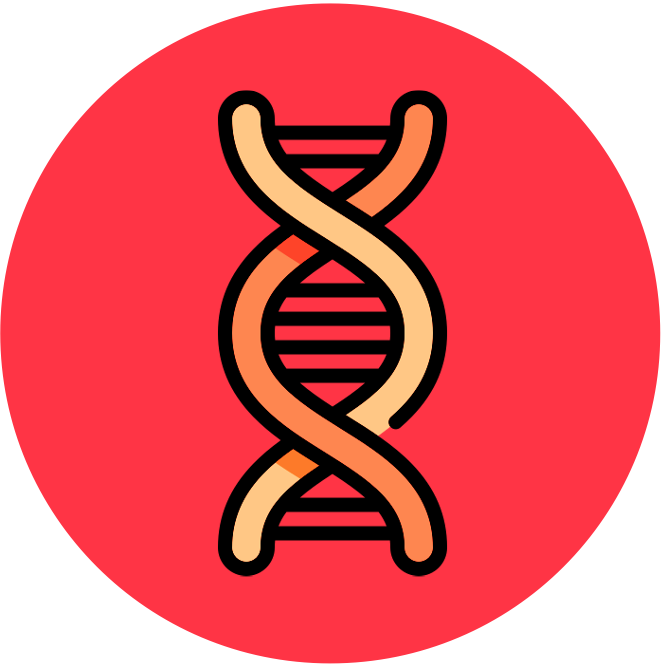

Sex Linkage
Sexually reproducing organisms inherit two copies of every chromosome, resulting in a pair of alleles for each characteristic
-
These chromosome are homologous (possessing the same genes at the same loci) and are called autosomes
In order for fertilisation to occur during sexual reproduction, one organism must transfer their genetic material to the gamete of another organism
-
This requires the two organisms to have diffrent reproductive capabilities, necessitating the need for different genetic instructions
-
These divergent instructions are encoded on a pair of chromosomes which are not homologous and are called the sex chromosomes
In humans, sex determination involves a pair of chromosomes called the X and Y chromosomes
-
Females possess two X chromosomes (XX), while males possess one X and one Y chromosome (XY)
-
The Y chromosome contains the genes responsible for developing male sex characteristics – in its absence, the female sex organs will develop
-
Hence the male gamete will determine the sex of offspring – as the female egg will always contain an X chromosome
Sex Determination

Sex Linkage
Sex linkage refers to when a gene controlling a characteristic is located on a sex chromosome (X or Y)
-
The X chromosome is longer and contains many genes required for survival (embryonic development requires an X chromosome)
-
The Y chromosome is much shorter than the X chromosome and contains far fewer genes (roughly 55 genes in total)
Because males and females have different sex chromosome combinations, the patterns of inheritance will differ according to sex
-
Sex linked alleles are represented as superscripts attached to the relevant sex chromosome (example: XA or Xa)
-
Because the Y chromosome contains very few genes, the majority of sex linked traits are X-linked
Sex-Linked Inheritance
Because females possess two X chromosomes, an X-linked dominant trait will be more common in women
-
An affected father always has affected daughters (daughters must inherit the father’s X chromosome)
-
Sons only inherit the condition if the mother is affected (sons inherit their X chromosome from mother)
Because males only possess one X chromosome, an X-linked recessive trait will be more common in men
-
This is because males cannot be carriers for X-linked recessive traits (they cannot be heterozygous)
-
Affected mothers always have affected sons, while unaffected fathers cannot have affected daughters
X-Linked Inheritance

Affected fathers have affected daughters

Affected mothers have affected sons
Haemophilia
Haemophilia is a genetic disorder whereby the body’s ability to control blood clotting (and hence stop bleeding) is impaired
-
The formation of a blood clot is controlled by a cascade of coagulation factors whose genes are located on the X chromosome
-
When one of these factors becomes defective, the clotting cascade becomes ineffective – meaning bleeding continues for a long time
Haemophilia is an example of an X-linked recessive condition, meaning it occurs more frequently in males
-
This is because males cannot be heterozygous carriers for the disease allele – as they are hemizygous, the disease allele cannot be masked




